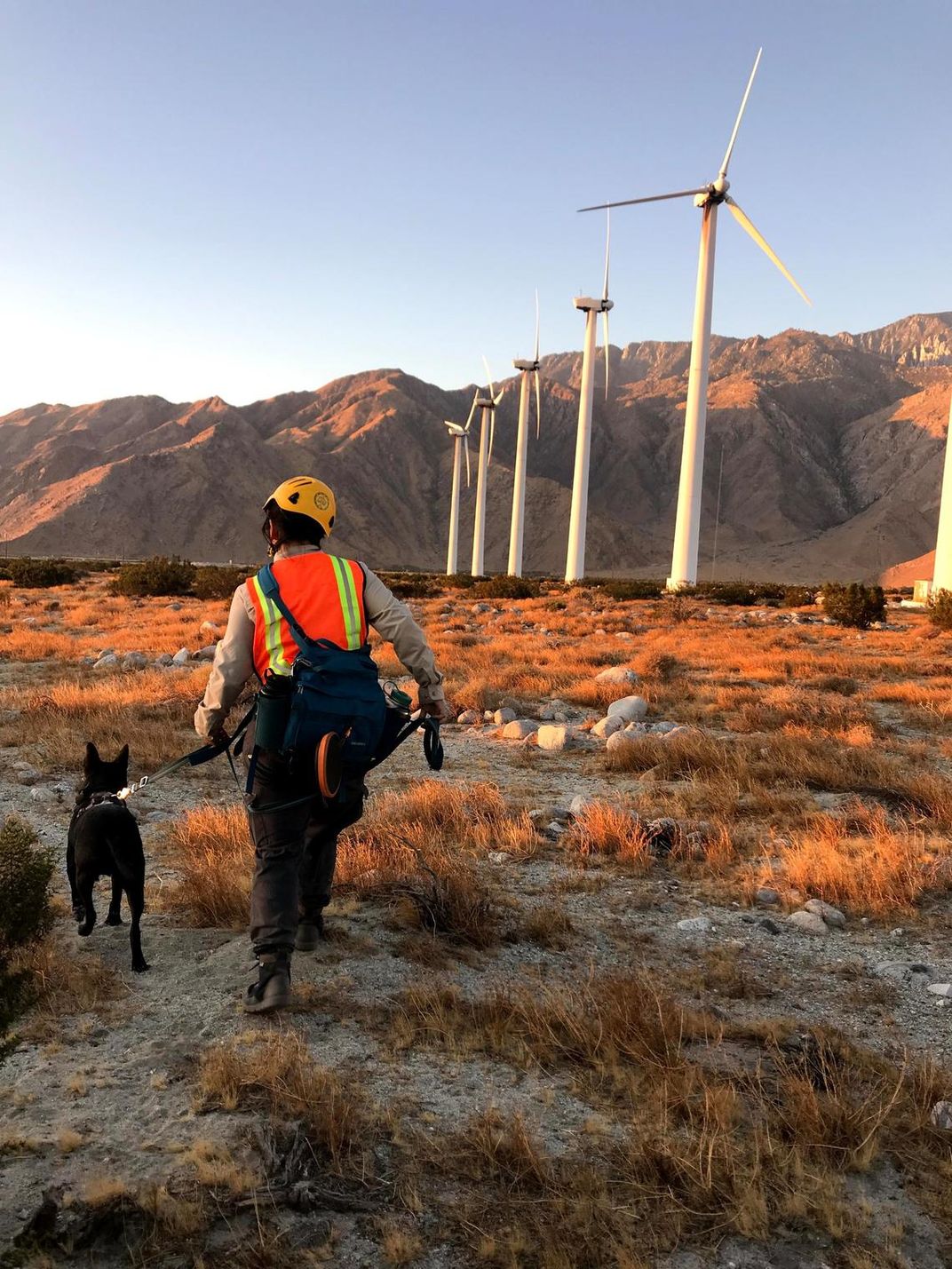Dogs Sniff Out Answers to Bat and Bird Fatalities Near Wind Turbines
Aided by canines, researchers found larger models do not necessarily pose a greater threat to wildlife
/https://tf-cmsv2-smithsonianmag-media.s3.amazonaws.com/filer/b1/c6/b1c6289c-b9c7-4cee-b8d0-87786c49d16a/dscn1040.jpeg)
Wind turbines spell trouble for flying critters. Over time, these clean energy behemoths are being built even larger to generate more power, but what happens to wildlife when blades get broader and towers get taller? It turns out, size really doesn’t matter when it comes to wind turbines. A recent study shows that newer, bigger systems are no more dangerous for bats and birds than older, smaller units.
To collect data for this investigation, scientists used conservation dogs. The four-legged researchers were able to locate downed birds and bats at a wind turbine facility in California that included both newer and older systems for comparative purposes, reports Josh Saul in Bloomberg Green.
The study, led by the United States Geological Survey (USGS), determined wildlife mortality rates remained the same per unit of energy produced. That is, as long as the electric output was constant, there was no difference between “smaller, lower capacity, closely spaced turbines with larger, higher capacity ones, more widely spaced,” the scientists write in the paper, published in March 2021 in the Journal of Applied Ecology.

“Location, as well as the amount of energy production, are likely stronger determinants of wildlife deaths than the size of turbines installed,” says study author Manuela Huso, a USGS research statistician, in a press release. “Simply replacing older and smaller wind turbines with newer and larger machines generating the same amount of energy has little effect on the rate of wildlife mortality.”
That’s good news for the wind energy industry, which is upgrading from smaller turbines with low capacity to larger units with better performance. The infrastructure plan working its way through Congress is likely to include tax credits for bigger and better renewable energy projects.
Of course, that’s good news for bats and birds too. And they can thank dogs for finding it out. Teams of canines and handlers worked at San Gorgonio Pass Wind Resource Area near Palm Springs, California, to help scientists assemble the data.
Another study, also focused on wind turbines, found dogs are much more adept at locating remains than humans, thus resulting in more accurate fatality counts. Published in the Journal of Wildlife Management in 2020, the controlled study shows dogs are between 2.7 and 6.4 times better at locating bats and small birds than humans. At one search site, “dogs found 71 bat fatalities in 55 searches compared to 1 bat found by humans in 69 searches,” according to the study.
“Truth was, people are terrible at finding bats and small birds,” study author K. Shawn Smallwood, a wildlife biologist who worked at University of California, Davis, tells Sarah Zhang of The Atlantic.
At first, Smallwood was doubtful that dogs would make that much of difference. The study results changed his mind.
“Of trial carcasses placed and confirmed available before next‐day fatality searches, dogs detected 96% of bats and 90% of small birds, whereas humans at a neighboring wind project detected 6% of bats and 30% of small birds,” according to the study.
Conservation canines are a great asset to science. In recent years, their talents have been assisted with a growing list of olfactory opportunities. Canines have also helping to sniff out Covid-19 contamination in Massachusetts, invasive mud snails in Wisconsin, illegal game poachers in Africa and even whale poop at sea for scientific research.
/https://tf-cmsv2-smithsonianmag-media.s3.amazonaws.com/accounts/headshot/dave.png)
/https://tf-cmsv2-smithsonianmag-media.s3.amazonaws.com/accounts/headshot/dave.png)